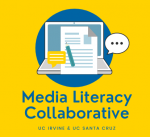Curriculum
- Lesson, grades 4 and 8, How did the arrival of European and American traders, and Spanish missionaries, change the lives of California Indians during the nineteenth century?
- Source set, grades 8 and 11, Why does the United States have Indian reservations?
- Source set, grades 3, 4, 5, 8, and 11, What were the gender roles in native societies in the past? How do different native people think of gender today?
- Source set, grades 10 and 11, How to incorporate Native American participation in the world wars?
- Lesson, grades 8 and 11, How did the federal government affect native communities through their education policies? How did native communities respond?
Recommended Websites
Smithsonian National Museum of the American Indian: http://www.nmai.si.edu
The National Museum of the American Indian (NMAI) is unusual because unlike most of the other Smithsonian museums it has two locations. The main museum is in Washington D.C. And there is the George Gustav Heye Center in New York City. The website has many online educational resources that provide interesting content. The goal of the museum is to be native centered, so it differs from traditional museums because it prioritizes the voices of native people, both past and present. The museum is part of a wider Smithsonian initiative called Many Lenses. Done in conjunction with the National Museum of African American History and National Museum of American History, Many Lenses takes an object, or series of objects, from one of the museums’ holdings and offers short essays that analyze the significance of the object from perspectives aligned with the peoples associated with each museum’s thematic mission. The essays are short, and thus might be useful to using in a classroom setting. For instance, the exhibit, “An Evolution of Expression,” which addresses quilting in American history, could be used as an interesting, if indirect, way of accessing family history and potentially useful as an extension or introductory/hook activity. The museum The NMAI’s “Native Knowledge: 360 Degrees” provides accurate information for educators about native history and contemporary issues.
- Many Lenses: https://nmaahc.si.edu/explore/manylenses
- Native Knowledge 360 Degrees: http://www.nmai.si.edu/nk360
Project 562: http://www.project562.com
“Created by Matika Wilbur, Project 562 is a multi-year national photography project dedicated to photographing over 562 federally recognized tribes in The United States resulting in an unprecedented repository of imagery and oral histories that accurately portrays contemporary Native Americans.” Includes many excellent blogs.
- Sections of Note:
- Contemporary Films: http://www.project562.com/films/
- Thanksgiving Address Blog: http://www.project562.com/blog/a-real-thanksgiving-address-the-words-that-come-before-all-else/
- Standing Rock Blog: http://www.project562.com/blog/still-native-land-understanding-the-movement-at-standing-rock/
California Indian History Curriculum Coalition: http://www.csus.edu/coe/cic/
“The California Indian History Curriculum Coalition (CIHCC) was given birth under the umbrella of the annual California Indian Conference (CIC) and was conceptualized in 2014 at CSU San Bernardino’s CIC. The informal coalition of educators, tribal scholars and native activists are promoting the implementation of California Indian Curriculum Summits. The goal of the Coalition is to promote the creation, adoption and implementation of California Indian-vetted curricula. In collaboration with public/private school educators, the focus is to infuse California Indian voice in the content of what our children learn in school.”
- Lessons and Resources of Note:
- Chumash (Santa Barbara area): http://www.csus.edu/coe/cic/assets/looa-flyer.pdf
- Achajamen and Luiseño (Orange County and San Diego County): http://www.csus.edu/coe/cic/assets/the%20gift%20basket%20curriculum%20%20packet_2015.pdf
- Kumeyaay (San Diego and Baja): http://www.csus.edu/coe/academics/doctorate/about/profiles/assets/kumeyaay%20learninglandscapes.pdf
America in Class (National Humanities Center)
Education website devoted to providing resources for instruction of primary and secondary sources and to Common Core State Standards.
- “The Columbian Exchange”
- Lesson that explores the exchange of animals, diseases, and plants between the “New” and “Old Worlds” and their impact on people around the world.
- http://americainclass.org/the-columbian-exchange/
- “America, the Creeks, and Other Southeastern Tribes”
- A lesson plan that looks at how the young United States (late 1700s and early 1800s) interacted with native people in the Southeast.
- http://americainclass.org/america-the-creeks-and-other-southeastern-tribes/
- “America and the Six Nations: Native Americans after the Revolution”
- The important native Confederacy of six tribes, the Haudenosaunee (Iroquois), are the focus of this lesson.
- http://americainclass.org/the-columbian-exchange/
PBS Native American History Month
A collection of resources, including films, on historic and contemporary Native America: http://www.pbs.org/specials/native-american-heritage-month/
- Coming in Fall 2018: NATIVE AMERICA: A Four-Part Series (2018)
- “Made with the active participation of Native- American communities and filmed in some of the most spectacular locations in the hemisphere, NATIVE AMERICA reveals an ancient and still thriving culture whose splendor and ingenuity is only now beginning to be fully understood and appreciated.”
- http://www.pbs.org/about/blogs/news/pbs-announces-native-america-new-four-part-series-premiering-fall-2018/
Library of Congress: http://www.loc.gov/teachers/
Probably the best archive for primary sources related to US (and even world) history. In addition to an extensive collection of digitized primary sources, LoC also offers a number of other teacher resources through its “Teachers” portal (see link above). Through the “Teachers” portal, educators can access a wide range of primary sources and lesson plans aligned to individual state standards. To find lesson plans according to the California standards, insert the requisite information into the search fields on the Teachers page.
- Themed Resources
- “Native Americans”
- http://www.loc.gov/teachers/classroommaterials/themes/native-americans/
- Information and lessons on native and European/American interactions. Includes links to a variety of primary and secondary sources, as well as lessons.
- Additional LoC Resources
- “Destroying Cultures: Immigration”
- http://www.loc.gov/teachers/classroommaterials/presentationsandactivities/presentations/immigration/native_american.html
- Overview presentation, with helpful links imbedded, of the impact settlers had on various tribes. Ready for use in the classroom.
- “Indian Removal Act”
- https://www.loc.gov/rr/program/bib/ourdocs/Indian.html?loclr=blogtea
- Timeline and collection of resources on the Indian Removal Act and Trail of Tears.
- https://www.loc.gov/rr/program/bib/ourdocs/Indian.html?loclr=blogtea
- “Willing to Serve: American Indians”
- https://www.loc.gov/vets/stories/ex-war-nativeamericans.html?loclr=blogtea
- A collection of oral histories from native veterans who served in wars from Vietnam to Iraq.
- https://www.loc.gov/vets/stories/ex-war-nativeamericans.html?loclr=blogtea
- Teacher’s Guides and Analysis Tools
Upcoming events


